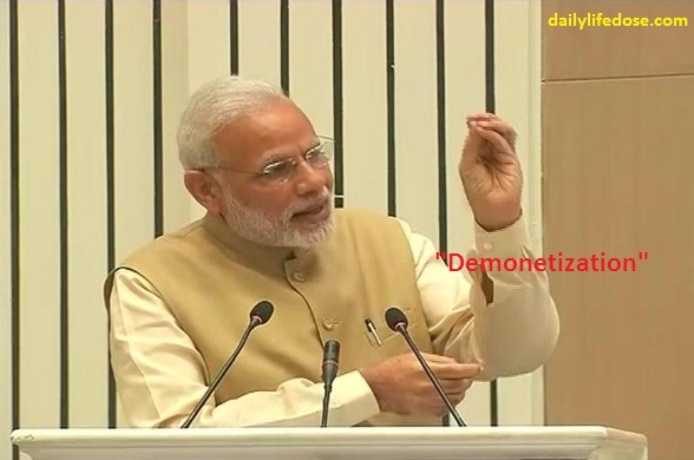This article covers the recent Demonetization scheme initiated by PM Modi and RBI. We have tried to highlight the basic reasoning behind this policy of illegalization of the old ₹500 and ₹1,000 banknotes and a few FAQs have been answered. The basic effects of the demonetization on the Business have also been discussed in the post.
8th November will be remembered in the history of India as a remarkable day when Prime Minister Modi suddenly addressed the nation. This unscheduled address to the nation began very calmly as he started reminding us about promises that he made during 2014 polls, and suddenly he said something that needed reaffirmation again and again. PM Modi said that all ₹500 and ₹1,000 bank notes will be invalid after midnight. Well, everybody was shocked and started counting their cash. He also said that RBI will issue new all ₹500 and ₹2,000 bank notes. He gave a timeline until 30 December 2016 to exchange all old ₹500 and ₹1,000 banknotes.
After that address, RBI also conducted a press conference and said that this decision was taken due to the significant increase in the supply of the ₹500 and ₹1,000 banknotes. They mentioned that forgery activity may have led to an increase of around 76% and 109% in the quantity of ₹500 and ₹1,000 banknotes. The officials alleged that terrorist financing and other illegal activities have been utilising this forged cash, thus this decision of elimination of higher denomination notes is taken.
Since then we have seen cash shortage, parliament disruption; fall in demand, the decline in consumer price index and regular attack on the government by opposition parties. The experts have been heavily balanced over the outcome of this move on economy and the country.
Today, even after more than 40 days there have been a lot of confusion around this term and action by the government. In this blogpost we have tried to sort some of the doubts. We have tried to refrain this post from any political bias; however, any logical discussion is appreciated in the comments section.
What is demonetization?
Demonetization is an act of withdrawing the legal status of a currency unit. The old currency units must be withdrawn and replaced with a new unit of currency under demonetization.
- Why such a drastic and mammoth move to demonetize 76% and 109% of ₹500 and ₹1,000 banknotes?
RBI says that due to increased case of fake high denominated notes and their illegal used in terrorist financing, hoarding black money, this massive step has been taken.
What exactly is this scheme?
The scheme suggests that all the ₹500 and ₹1,000 banknotes have lost their legal tender as of 8th November 2016. So, these notes cannot be used for any transactions; for any business. These notes can be exchanged at banks, RBI branched and Post Offices till 30th December with certain conditions. There will be limits on withdrawals from ATM and Banks which are updated regularly. Currently ATM withdrawal limit is ₹2500 and Bank withdrawal limit is ₹24,000.
For more reads on business, we request you visit the Business section of our blog.
Effects of this scheme
- Counterfeiting will stop as most of the currency will be out open in Banks and as withdrawal is limited, the related organisations will face difficulties in motivating people to commit criminal activities.Funding for terror, illegal arms dealing, drug trafficking, illegal election funding, and smuggling will stop due to it.
- The Black Money and Hawala transactions will be hit badly; if they don’t disclose, their money will be of no use.
- A cashless economy can be promoted whose benefits are huge in medium to longer term. (We will cover cashless economy in next article)
- It will lead to more money coming into stock markets and formal economy.
- It will lead to a decline in Interest rate and cost of borrowing will lead to increase in business activities.
For more FAQs and queries on Demonetization of ₹500 and ₹1,000 banknotes, we request you to visit RBI’s Official circulars RBI’s official website.












